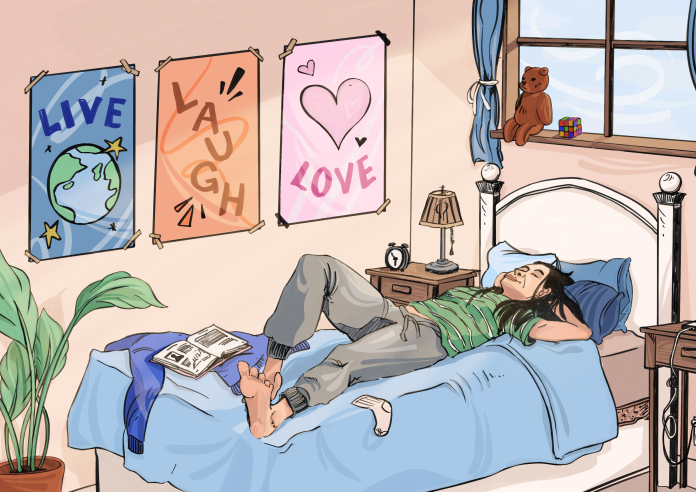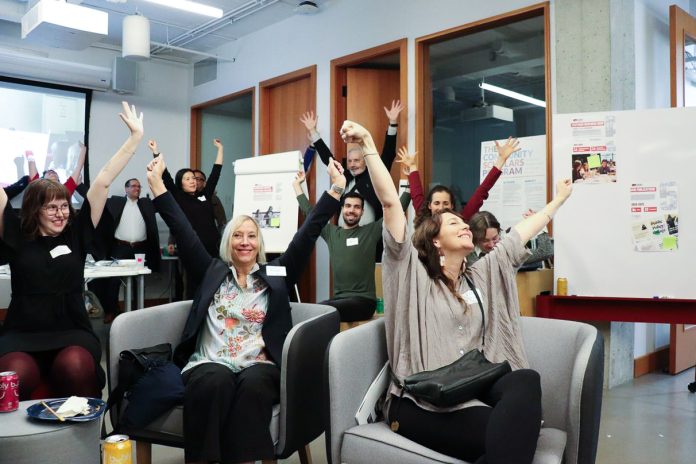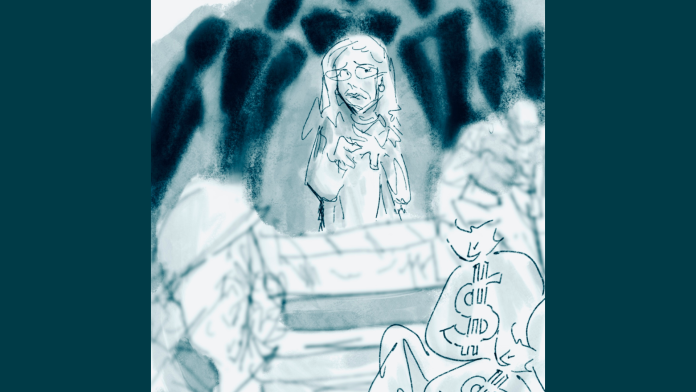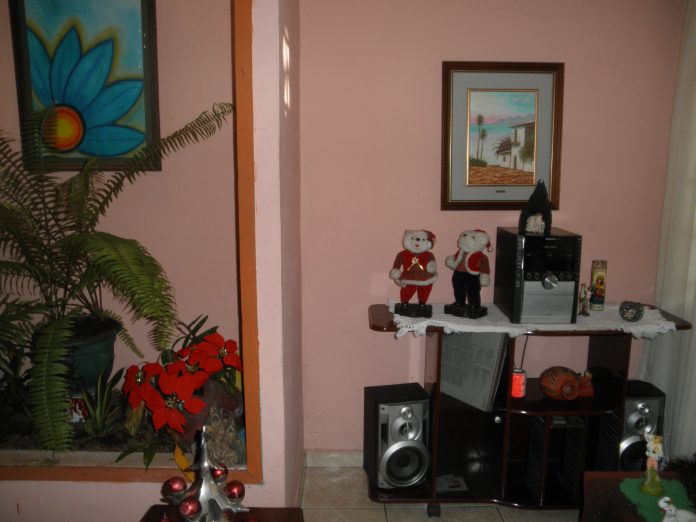Calls emerge for increased program funding for BC sex workers
By: Niveja Assalaarachchi, News Writer
On December 16, 2025, 10 organizations — including sex worker-led groups, feminist organizations, and First Nations groups — released a statement marking the International Day to End Violence against Sex Workers. In their statement, the groups called for the provincial government to increase funding for programs serving BC sex workers.
The push comes amid a crisis in Vancouver’s Downtown Eastside, where centres serving unhoused women, those who face gender-based violence, and support for substance use are closing. In July, the PACE Society, a drop-in centre in the area, permanently closed down. In February, the WISH Drop-In Centre closed temporarily. Most recently, The Tyee reported that the Kingsway Community Station, Vancouver’s last drop-in centre for sex workers, was on the brink of closing as a result of funding changes tied to the City of Vancouver’s 2026/27 budget.
In their press release, the groups noted that these centres are essential, given the mobile outreach, peer occupational health, and safety training services they provide. “We have seen first-hand sex worker-serving organizations having to close or reduce services over the past year and how detrimental this is to sex workers who need these programs day to day,” said the organization Living in Community. These centres are also essential amid the increasing prevalence of gender-based violence — violence which has seen a 54% increase in Canada since the start of the COVID-19 pandemic.
The Peak spoke with Kaley Merritt, a mental health advocate at the Downtown Eastside Women’s Centre, on the impacts that the province’s cuts have had on sex workers and services. The Downtown Eastside Women’s Centre provides services to the sex worker community, such as temporary shelter spaces, recreation, and self-help assistance. Merritt noted that her shelter serves an average of 500 people a day — an increase of 200 people compared to the previous year. “There’s been a real demand on services, being that we are one of the organizations that are still operating in the Downtown Eastside,” she said. Merritt said the demand for increased services comes alongside increasing mental health struggles that are more noticeable among sex workers.
In BC, certain aspects of sex work are illegal — specifically, the ability for people to purchase sex services. However, it is permissible, in narrow instances, for sex workers to offer services. Merritt noted that the nature of how the province governs sex work has left many in the dark about how it applies in reality. She said this, along with the stigma that comes with their employment, makes sex workers hesitant to look into support services.
The joint statement urged the government to pay attention to how these effects and the closures are tied to the criminalization of sex work: “We cannot accept the violence perpetrated against sex workers being minimized or overlooked,” as “continued closures, underfunding, and service reductions in the context of ongoing criminalization are putting sex workers’ lives at risk,” stated the press release. Andrea Krüsi, principal investigator at the research project An Evaluation of Sex Workers’ Health Access, stated, “Decades of peer-reviewed evidence highlight how criminalization undermines health equity and human rights of sex workers.”
Merritt noted that decriminalization reform “would really put a lot of autonomy in sex workers’ hands and reduce fear and open up possibilities.” She said, “Sex workers would really get a voice to decide what is it that they need and how can we come together to create different things that protect sex workers.”
As for concerns around the shelters themselves, Merritt said more people seeking services that are gradually closing down put “a lot of financial strain” on her shelter. “It’s been difficult to maintain staff and carry on with a lot of the other supports and services that we need.”
For these compounding reasons, organizations like the Downtown Eastside Women’s Centre called on the provincial government to “allocate stable and enhanced funding for critical programs serving sex workers, following many existing recommendations, including those contained in the Final Report of the National Inquiry into Missing and Murdered Indigenous Women,” the final report of the Missing Women’s Commission of Inquiry, and the province’s gender-based violence action plan. “We often see that marginalized populations face the most impact from a lot of this, and they are very connected to one another,” said Merritt. “There’s a lot of systemic harm that falls into all of this. So, when we’re looking at sex worker issues, we’re also looking at Indigenous populations, BIPOC populations, [and] disabled populations.”
When it comes to discussions centred around helping sex workers and tackling gender-based violence, Merritt said,
“It’s always important to remember that sex workers are people. They are human beings. They are mothers, daughters, sons — they’re people just like any of us. Sex workers deserve dignity and respect.”
— Kaley Merritt, mental health advocate, Downtown Eastside Women’s Centre
Brighter Side: music nostalgia
By: Zainab Salam, Opinions Editor
Art has a way of preserving time. My favourite albums are basically an auditory photograph of what life was like when they were on repeat; music is a time capsule. Lately, I’ve been packing up my room for a move, and I stumbled upon my collection of CDs that included my favourite songs and my stay-up-all-night companions. Like plenty do while going through their items, I had to listen to some of them. So, I metaphorically and literally wiped the layer of dust that coated my far too-long-neglected shelved memories. And oh my god. Nostalgia hit me like a wave — swept me back in time to revisit all my past crushes, and all my now-dead friendships.
There’s a melancholy in this kind of nostalgia. Music can remind us of what we once were before all of our hopes and aspirations were buried under piles of responsibilities that appear never-ending. But music does more than recall moments; music echoes the past into the present. As cultural historian Jeremy Eichler suggests, music can act as an emotional bridge to the past, carrying forward the resonance of lived experiences in ways that facts or photos alone cannot. In other words, music allows our past self, for a brief while, to interlock itself to our current selves. For a moment, we stand in front of past selves and dialogue.
Clichés contain pearls of human wisdom
By: Noeka Nimmervoll, Staff Writer
The question of “what do I do with my life?” seems to occupy the psyche of many people. Which isn’t odd considering the relevance of existential questions and their resulting answers on shaping the trajectories of our lives. As we get older, we start to realize that nobody really knows what they’re doing. How do we find meaning in this vast continuum that we call life? One method that I’ve found to figure out the answer is through clichés like live, laugh, love. We all love to harp on the white mom who has found comfort in a cursive sign boasting this statement, but there really is something to this message.
On a personal level, figuring out what’s important in my life has been difficult, but the answer came to me in a rather casual, non-academic setting: sitting at the bar talking with my friends. Laughing, enjoying others’ company, relaxing after work. That’s when the epiphany hit me: it really is just live, laugh, love! How corny, I know.
It’s unfortunate that clichés have gained a negative reputation as phrases that are overused, and indicate a lack of original thought from the speaker or writer. Of course, there may be cases where this is true. If you’re to declare that your New Year’s resolution is to get fit and be healthier, you don’t want to hear someone tell you, “Well, actions speak louder than words.” You just want that person to hush. However, it seems that oftentimes they don’t understand the meaning behind the clichés that they hear, leading to undeserved judgment. However, clichés can be a tool of incredible insight into the human condition if they are understood. Instead of rolling your eyes at home decor that proudly boasts live, laugh, love, consider why this phrase has become immortalized in our context.
Ignorance is bliss is another phrase that echoed around me many times in childhood, and now provides me with a different perspective on aging and knowledge — and makes me jealous of my baby cousin. But it also makes me grateful for my childhood, even the times where I was utterly lost and confused. Part of understanding the meaning behind clichés is getting older and experiencing life.
Clichés are a fascinating subsection of speech that provide a log of common human thoughts throughout history.
If you ever want insight into your circumstances, it might help you to know what the common consensus is.
PR-lady from athletics department holds mandatory teach-in on why football is problematic
By: An unsuspecting student
I was walking to the bus loop after a long day of classes when a shadowy pink and yellow figure suddenly appeared out of nowhere. A bag was then shoved over my head and my hands were zip-tied together. All I could smell was Chanel No. 10 Eau de Toxique Florale Gaz — don’t ask me how I know. The next thing I knew, I felt myself being pulled in all directions and down endless steps before finally coming to a stop. I heard a door creak open eerily. Someone then grabbed my shoulders and plopped me into a seat.
When the bag came off my head, I found myself in a cramped and dimly lit lecture hall packed with hundreds of trembling undergrads. I was trying to gather my thoughts when a high-pitched voice rang out. I traced it to a blond woman in a pink blazer, peering out from behind a dilapidated podium.
“Helloooo my lovelies! My name is Tiffannee, with two f’s and two e’s, and I’m the new public relations manager for SFU’s athletics department. Thank you for voluntarily attending this talk about why it’s time to abolish college football!” I suddenly knew where I was. It was an SFU propaganda event dedicated to self-affirming their decision to get rid of the football team.
Tiffannee beamed. “Now, as most of you know, the university officially ended the football program earlier this year, and I’m here to address why football no longer has a place in higher education. Football has literally been giving major #DestroyingTheEarthCore vibes since day one.”
An overhead projector flickered to life. The words: Football — It’s Giving No More Hot Girl Winters appeared alongside a stock photo of a football helmet next to the earth on fire. Tiffannee began shuffling through her cue cards. “First off, we must protect our precious environment. Who knew tackling opponents at 100 km per hour would emit more carbon dioxide than the entire university combined? Yes, that’s right! Traumatic brain injuries are just not in this season. SFU wants to nurture academic success not the destruction of the ozone!” Blank expressions plastered the faces of the unwilling audience.“I’m an environmental science major,” a voice echoed from across the room. “What about the fact that we leave all of the lights on in our buildings? Doesn’t that account for more emissions than a little old football? In fact, where’s the science there . . . ” The person was then suddenly dragged out of their chair and out of the room. “Let’s get back to this informative session! I love this!” someone called out.
“Yaaaas, thank you Todd! But the real problem here? The fact that football helmets are made from plastic. And plastic comes from digging wells or whatever. And wells? They’re bad for the environment, babes. This clearly points to a reasonable explanation as to why SFU would get rid of the program — because we love the environment! Even though we still invest in fossil fuel companies — UGH who put that on my cue cards??? Anyways, live, laugh, breathe the fresh air at SFU!” The same voice shouted from the audience: “Yeahhh! We love the environment!”
“That’s right, Todd. You love everything except for me. Ugh. And moving ooonnn, football is just distracting. Pushups, burpees, bicep curls? 6:00 a.m. laps at the stadium? Noooo thanks. Just imagine how much more time players could spend on pesky coursework instead of dislocating knees and spraining ankles.
“Last thing, school spirit has gone completely out of hand.” A photo of a group of maple leaves wearing Red Leafs jerseys and chugging beer flashed on the wall. “We must preserve our identity as a commuter schoolTM. Rowdy pep rallies and free popcorn are out, period. Bus lines and broken R5s are sooo in!”
The audience erupted in an uproar of protest just as a thick fog that reeked of synthetic florals descended from above, knocking out several students, including me. I woke up slumped outside the library with a giant foam finger that said: “PROTECTING THE ENVIRONMENT (AND SCHOOL SPIRIT) SINCE 1965.”
Vancouver’s SkyTrain is now Bitcoin-powered
By: Ashi, senior writer for imaginary infrastructure
In a move described by aides as “inevitable, visionary, and definitely not a parody of governance,” mayor Ken Sim announced Thursday that Vancouver’s SkyTrain system is soon to be powered entirely by Bitcoin. Not metaphorically. Not financially, even. The trains, he says, will now run on pure belief.
Sim, a self-described financial expert, takes his job as the city’s unofficial Bitcoin mascot rather seriously. In fact, this long-time evangelist for crypto solutions to non-crypto problems has previously appeared on at least seven YouTube channels dedicated to Bitcoin, spoken at the Virgo Crypto Summit, and repeated (patiently and faithfully) that Bitcoin is the greatest invention in human history.
“A 20th-century mindset of electricity that comes from somewhere has trapped transportation for far too long,” Sim told The Peak. According to city documents (Sim’s doodles) obtained by a Freedom of Information Act request from The Peak, each SkyTrain car will now be tethered to the blockchain, drawing energy from the collective faith of earth’s billionaires and the raw metaphysical force of scarcity. Commuters may notice minor changes, including a new announcement in Sim’s voice reminding riders that any delays due to market volatility are only temporary. Compass Cards are now gone. Riders must scan a QR code and wait for the blockchain to validate their existence. Flares fluctuate minute to minute. And in the event of a sudden, unscheduled stop, passengers are advised to stay inside and loudly insist nothing is wrong.
Funding for the project will come from Sim’s personal donation of Bitcoin worth $10,000 and strategic budget cuts. The arts, culture, community services, planning, urban design, sustainability, and various city jobs have been trimmed or frozen, freeing up resources to expand the Vancouver Police Department’s crypto enforcement department and ensuring trains run on “trust me, bro” vibes.
Conventional currency systems, Sim continued, are “basically a Ponzi scheme,” unlike Bitcoin, which is . . . different . . . somehow. For those with a profound distrust of institutions, Sim insists that Bitcoin is backed by math and the City Council. “Trust me, bro,” he explains.
None of this, Sim insists, has anything to do with his personal investments, his friendships with billionaires, or recent political endorsements of Bitcoin elsewhere. Clearly, this project is for the people. After all, a whopping 29% of them approve of his performance as mayor. Which, when counted by blockchain, actually equals 100%.
The environmental rationale for the SkyTrain overhaul is, according to Sim, “rock solid.” Using “inverted sustainability,” he argues, the massive energy demands of Bitcoin mining are actually good for the planet because they encourage the construction of renewable energy projects. Somewhere. Eventually. By someone. Just not by him.
“Demand creates innovation,” he said, “And if a few glaciers melt along the way . . . well, that’s what the bros call liquidity.”
Crypto YouTuber Julian Figueroa applauded the decision. “Everyone who spends time in Vancouver will inevitably hear someone on the SkyTrain talking about the lack of affordable housing . . . This doesn’t fix that, obviously. But Bitcoin, eh?” he told The Peak.
“I have hope,” Sim concluded. “Not just for Vancouver, but for the world.” That hope now hums quietly, encrypted and immutable, always just one technological breakthrough away from solving housing, climate change, and the meaning of life itself.
Community-Engaged Research Initiative celebrates fifth anniversary
By: Lucaiah Smith-Miodownik, News Writer
SFU’s Community-Engaged Research Initiative (CERi) marks its five-year anniversary of “community-driven research.” The organization focuses on “the capacity of SFU’s researchers and students to engage respectfully and ethically with community organizations, Indigenous Nations, community members, and leadership.”
CERi places community members who are directly affected by social issues at the forefront of their projects. Otherwise,
“When universities or other institutional researchers go into communities to investigate and explore the challenges communities face, the research doesn’t necessarily serve the direct or immediate interests of the community,”
— Stuart Poyntz, co-director, CERi
Research that is not community-engaged may focus on “its own ends and its own ambitions” without prioritizing community needs or addressing challenges.
As CERi recognizes half a decade of community-focused work, The Peak is taking the opportunity to look back at the organization’s highlights. The Peak reached out to the organization for an interview, but did not hear back by the publication deadline. One of CERi’s accomplishments is the 312 Main Research Shop, “which offers low- or no-cost research services to local non-profits, providing access to academic resources and training to support community-driven projects.” The project is “inspired by the ‘science shop’ model widely practiced in Europe,” and allows SFU graduate students and faculty to work with community partners on addressing concerns. The shop has inspired over 14 community partnerships, including the Downtown Eastside Climate Resilience Roadmap. The roadmap “looks into the current and projected climate impacts to Downtown Eastside residents and organizations.” It also focuses on “further developing a strategic guide that integrates best practices in the social sector to minimize climate risks and emissions, alongside equity, health, housing, and other organizational goals.”
CERi also collaborated on the Indigenous-centred Knowledge Exchange, which “matches community-identified knowledge needs and strengths with institutional research support, ensuring research directly benefits and empowers Indigenous communities.” The initiative “provides funding to support researcher costs and offers community-based opportunities such as youth internships and the involvement of knowledge keepers (Elders, artists, youth activists, etc.) on a case-by-case basis.” One publication tied to the knowledge exchange describes “a practical application of a Two-Eyed Seeing approach in knowledge synthesis as part of Phase I of the First Nation Health Authority’s ‘Indigenizing Harm Reduction Study.’” Two-Eyed Seeing “refers to learning to see from one eye with the strengths of Indigenous ways of knowing and from the other eye with the strengths of Western ways of knowing and to using both of these eyes together.” A full list of manuscripts connected to the exchange can be found on the Centre for Collaborative Action on Indigenous Health Governance site.
The initiative also worked on “Quiet Alarm: A Review of CBC’s Climate Reporting,” a collaborative effort with the Climate Emergency Unit aimed at better understanding CBC’s approach to climate reporting. Doing so allowed the organizations to “make the case for reforms related to committing more resources and daily reporting to the causes of, solutions to, and urgency of, the climate crisis, connecting the dots between extreme weather events and fossil fuel combustion, and being more critical of false solutions that delay climate mitigation.”
Those interested in learning more about CERi’s work can view their five-year report on their website.
Students express frustration over Canvas outage during finals season
By: Niveja Assalaarachchi, News Writer
From 11:00 p.m. on December 14 to 4:00 a.m. on December 15, 2025, SFU Canvas experienced a service outage that left students unable to upload assignments or access course materials.
Students took to the r/simonfraser subreddit to express their frustration and anxiety around the situation, given that the outage occurred during final exams and projects. A user who created a thread on the situation said, “This outage directly affected our ability to study and prepare for exams.” They also stated that the incident is “not something students should just be expected to absorb and move on from.”
The user, who said they planned to email SFU about their grievances, also stated the university should take full accountability for the outage. They said it was imperative that SFU implement accommodations for students affected by the incident.
“We pay a lot to be here. Reliable infrastructure during finals should be the bare minimum.”
— Reddit User, r/simonfraser
In a statement to The Peak, SFU noted the outage was “unfortunate,” recognizing the impact it would have on “a student’s ability to submit assessments or otherwise prepare for their examinations.” The university did not mention why the outage occurred. They stated that the outage “was short in duration and impacted a small number of users.”
SFU said instructors were informed about the issue with the platform at the time and were told to help students facing difficulties. In terms of academic concessions, like deadlines, SFU said that “students were instructed to connect with their instructors directly regarding deadlines.”
This is not the first time that SFU’s online services have faced accessibility issues, with an issue affecting students’ ability to enroll in courses through MySchedule in November 2024. They also denied that the issues had any links to the university’s financial situation, which has seen cuts to services. Regarding the MySchedule incident, SFU said it was caused by “an upgrade made to the software by the vendor.”
The university also mentioned that the Canvas outage occurred on the on-premise version of the platform. SFU has since fully moved away from this version in favour of a cloud-based platform, starting from January 1.
Scheduling conflicts can exacerbate financial hardships
By: Zainab Salam, Opinions Editor
There’s nothing quite like logging on goSFU, or looking up course outlines to plan a perfect semester with all the necessary courses for graduation, just to see that your major’s courses fall all at the same time. Like seriously, who thought of doing that! I can’t even pick a specific instance of this happening, because it has happened way too often at this point in my degree. Just this semester, the psychology department is offering PSYC 100 and PSYC 102, which can be taken concurrently, at the same exact time: Thursdays, 2:30–5:20 p.m. To me, this issue causes problems that ultimately further impact many students’ financial situations.
To specify, I am pointing at the consequences of this scheduling issue on student financial aid. In cases where a student needs full-time student funding, they must maintain the required minimum threshold for full-time studies to be eligible. Meaning, a student must be enrolled in a minimum of 9 credits to be eligible to receive the full-time funding — or 6 credits if they are a student with a permanent disability. A fiscal report by the Canada Student Financial Assistance Program, which operates alongside StudentAid BC, details an increase in the total number of loan recipients. Just from 2023 to 2024, there had been a total of 66,720 recipients of the Canada Student Loan in BC. Considering that SFU is one of a handful of post-secondary institutions in BC, I feel safe to assume that there are those who rely on student aid funding to acquire their education at SFU. As such, SFU must bear those students’ systemic hardships in mind when planning the semester.
Every time I encounter this issue, I can’t help but wonder how many other students have faced further dilemmas. When required courses conflict, students are left with tough choices. Choices that may delay their graduation, overload future semesters, or lead to having to take unnecessary elective courses to remain under full-time status. How many of us have had to take an elective course to add credits to be eligible for student aid?
It’s understandable that occasional course scheduling conflicts occur. Departments may face room shortages or enrollment pressures. However, I believe the university needs to be a bit more mindful of such situations to alleviate some of the issues that students face. For example, offering more distance education versions of mandatory courses would provide students increased flexibility to plan their schedules more efficiently, with the added benefit of helping those with disabilities!
As a person who has relied on student aid to get me through my undergraduate degree, the financial pressures that I have faced have contributed to my stress. And I have heard way too many stories from my peers that concur such a negative impact on our quotidian routine.
I think it’s time that we recognize that, like everything else, course scheduling isn’t just a bureaucratic process, but extends to impact students’ personal lives.
And as such, care must be implemented.
The elbows up cult is ruining cooperation in Parliament
By: Mason Mattu, Section Editor
In a minority government, cooperation with other parties is essential to ensure stability and unnecessary elections. Budget votes are where this cooperation becomes non-negotiable, as they are confidence votes. Which means if a majority of members of Parliament do not agree on the budget, it would lose the confidence of Parliament, thus triggering an early election. Thanks to the affirmative vote from Green Party Leader Elizabeth May, and several abstentions from various members of Parliament, Prime Minister Mark Carney’s government narrowly survived a confidence vote by passing its budget. However the events preceding this vote expose a dangerous turn in Canadian politics — one that erodes political compromise and transgresses over minority government norms.
“I don’t like the budget,” May bluntly admitted in an interview with CBC. Her support was not an endorsement of the government’s disastrous budget that is riddled with right-leaning spending cuts and corporate handouts. Instead, it was based on fear-mongering from the Liberals with no concrete concessions or compromises made to earn her vote. All she got was a non-binding verbal promise to commit to our Paris climate targets (which Carney doesn’t seem to be steadfast on committing to, given his interest in an Alberta-West Coast pipeline).
Carney’s government embraces further right-leaning policies such as reckless pipeline expansions and handouts to Canada’s top 1% — they are intimidating other parties to go along with their plan under the false notion of keeping our “elbows up.” They use a phrase to call left-leaning parties into line to stand against a common enemy. By doing so, he is effectively asking them to suspend their demands and focus on his vision for Canada’s future — one that doesn’t align with the other parties’ values.
What you will hear from Carney’s Liberal government and its supporters is that anyone who did not support their budget doesn’t want to build a “Canada strong.” Due to threats of sovereignty and the unlikely potential of Canada’s Conservative Party forming government, it is, in Carney’s view, the responsibility of left-leaning opposition parties to vote on Harper-era fiscal priorities born out of a lack of compromise. This framing is simply ridiculous.
In reality, it is Carney with his elbows down. If an elbows up approach was to be truly embraced, there would have been a call for unprecedented collaboration in Parliament.
That would include listening to the voices of opposition parties to ensure the stability of our political sphere and recognizing that, in a minority government, it is the responsibility of the party in power to appease opposition parties.
For example, in the previous government, former Prime Minister Justin Trudeau made concessions to the New Democratic Party (NDP) to ensure the survival of his minority government — thus securing the stability of the country. Through this partnership, the NDP stipulated Trudeau to pass pharmacare, dental care, and anti-scab legislation — to which Trudeau yielded. This exemplifies how the previous government prioritized cooperation and didn’t lead by fear.
Prime Minister Carney’s government does not display a similar strategy. For example, his declaration before the budget vote — that his government is prepared for an election while refusing to amend his budget — paints a very grim future for Canadian politics. The NDP had asked the Liberals to include “substantial investment in jobs, housing, and healthcare.” The Bloc Québécois wished to see interest-free mortgages for first-time home buyers and increased old aged security benefits. Carney met with the leaders of other parties, seemingly pretending to hear their concerns about the budget and what he would have to do to earn their votes.
Instead, what is developing is a culture of fear and intimidation — where parliamentarians are pressured into voting for a budget that doesn’t align with their values — such as what happened with May, when she had voted for a budget that betrays the Green Party’s principles and embraces right-leaning policies. By using the threat of a Conservative victory in an election as a reason why his government deserves support, Carney is actively going against established minority government political norms of cooperation. Until he decides it’s time to cooperate with other parties, we’ll keep on having extremely close confidence votes. We’ll continue to be politically unstable.















